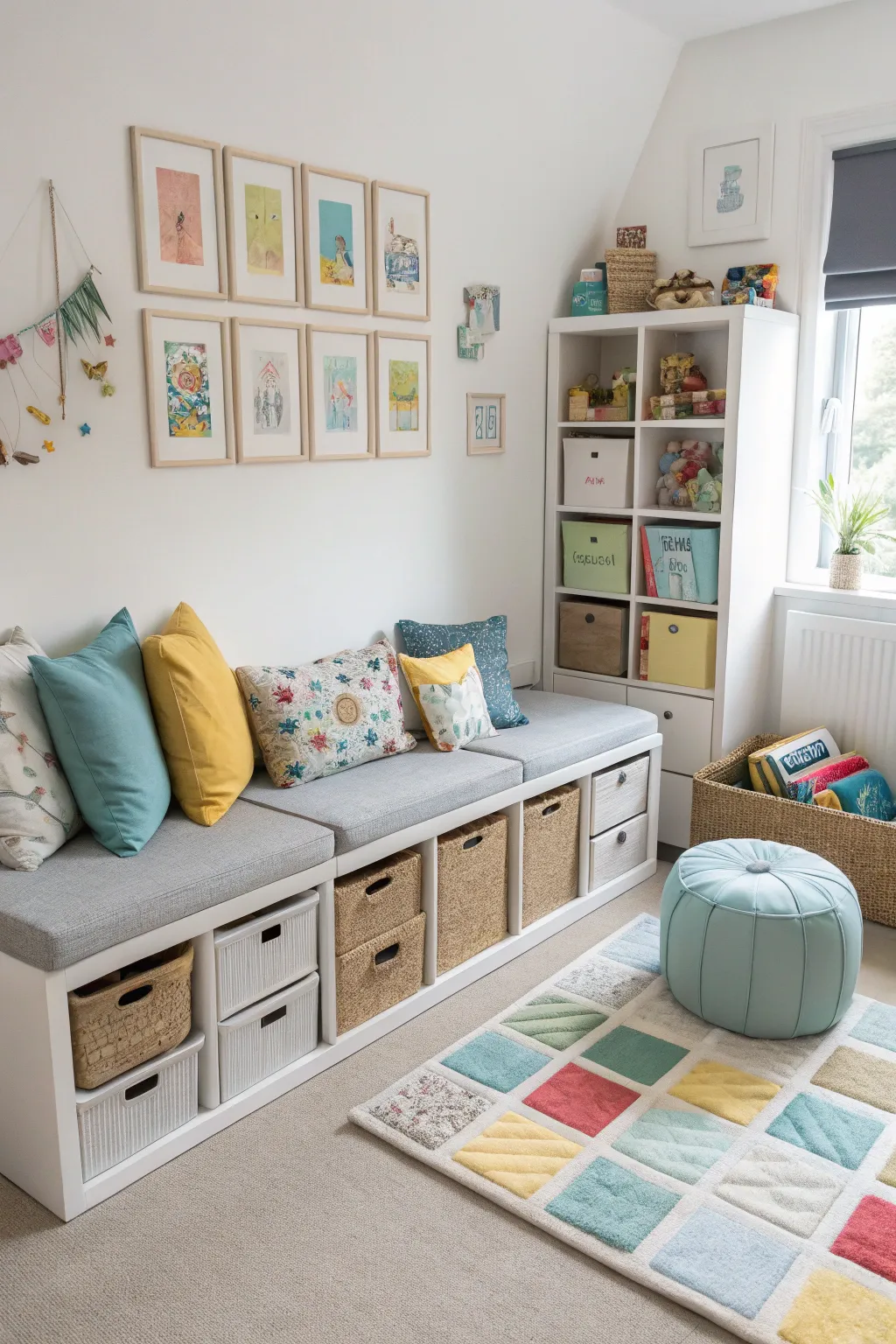When it comes to designing a child’s room, I truly believe it should be a blend of imagination and everyday function. Over the years, I’ve gathered countless little ideas that have made my clients’ children’s rooms not just more beautiful, but more livable too.
Let’s dive into the world of dreamy kids’ room transformations—where practical meets whimsical, and every day can feel a little bit like an adventure.
1. Shared Space, Sweet Space
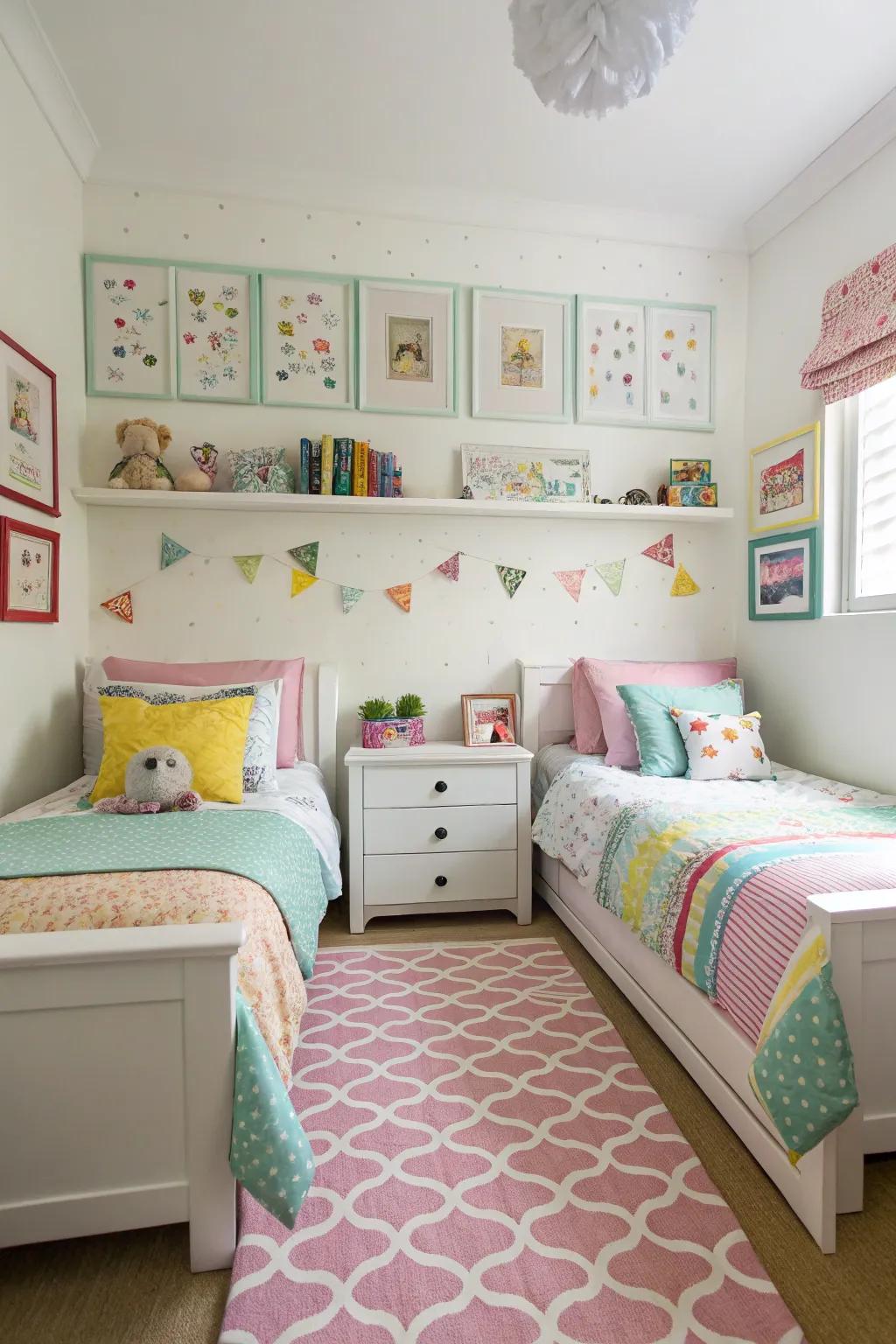
Symmetry is a trick as old as time, but it never fails to bring peace to shared rooms. When each child has their own mirrored area, there’s a gentle sense of fairness—and less reason to squabble over who gets the sunny side.
Isn’t it wonderful when harmony and style meet?
A few suggestions:
2. Let Their Personality Shine
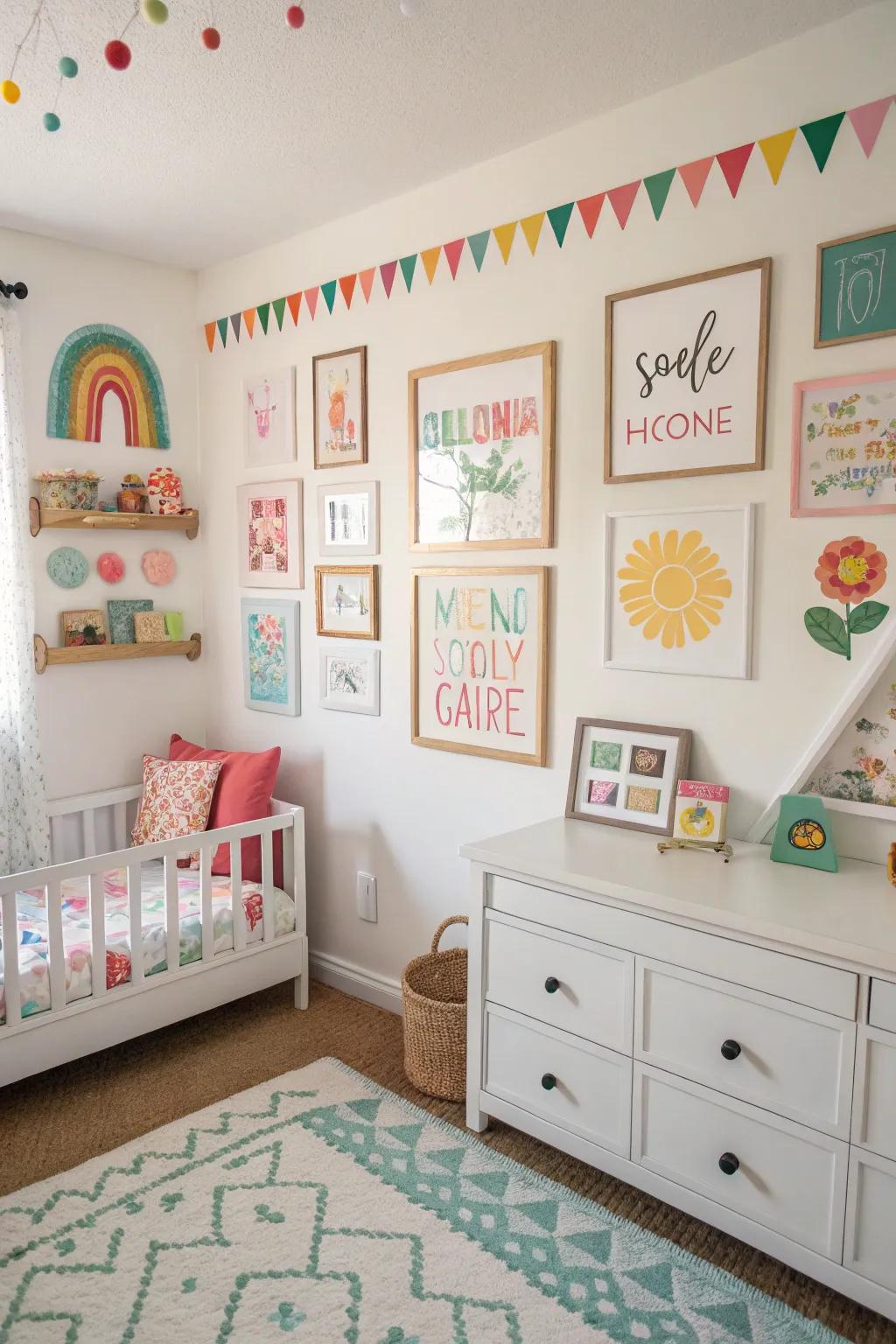
Every child deserves a haven that reflects who they are. Adding a personal touch to their room isn’t just about style—it’s about giving them a true sense of belonging and pride in their space.
Invite your child to help select their favorite motifs or colors, and make sure to showcase their name or interests in creative ways.
- Custom name signs above the bed or door make them feel special.
- Personalized wall decals or themed art show off what they love most.
A room with personality? That’s the ultimate comfort, and a joy to create.
Products that could assist:
3. From Bottom to Top: Transform Kids’ Rooms with Bold, Room-Spanning Decor
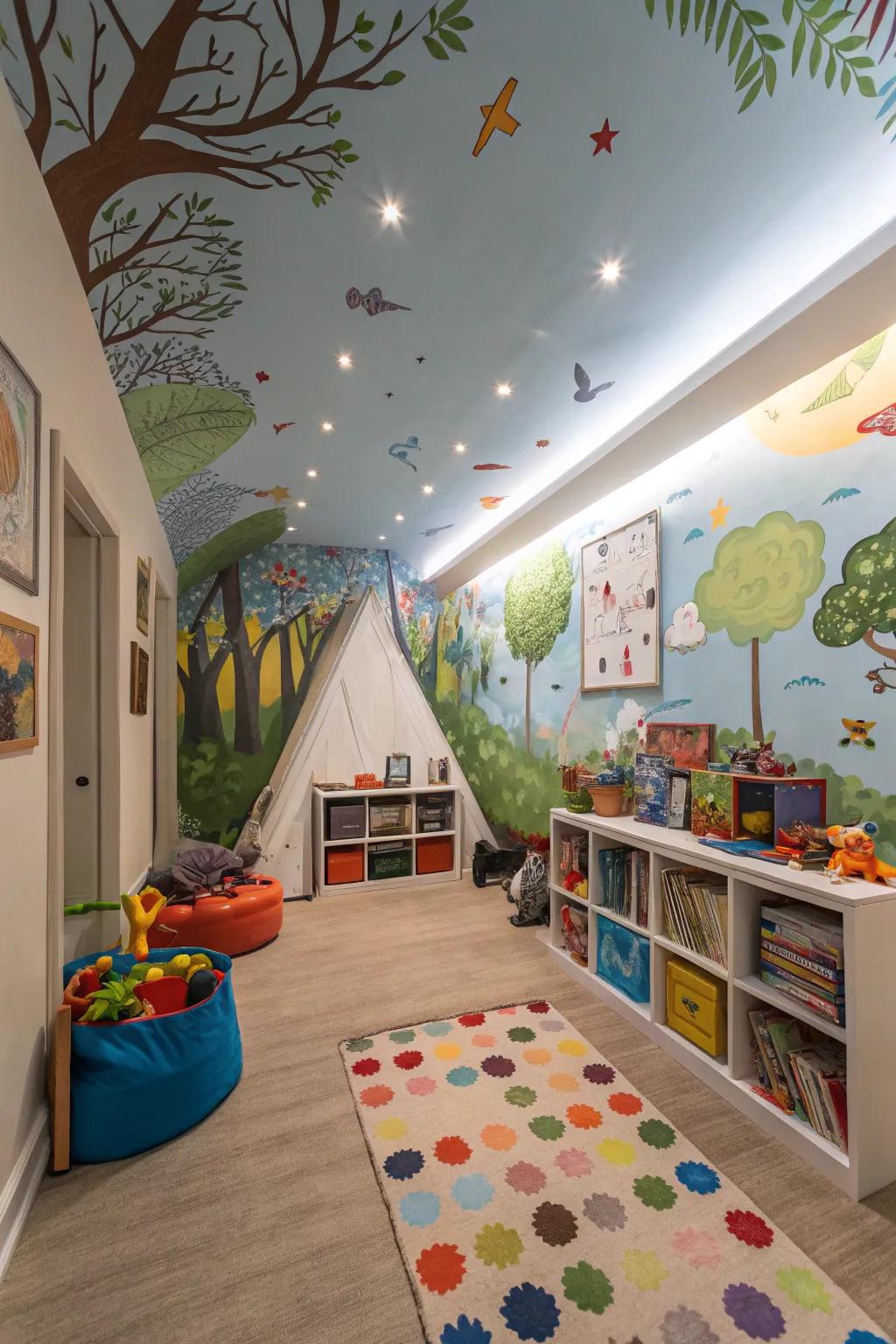
Imagine stepping into your child’s room and being surrounded by an atmosphere that feels like stepping into a storybook. Floor-to-ceiling murals or wallpaper can utterly transform a space—giving it not just personality, but personality that soars from the carpet right up to the ceiling.
I often suggest this dramatic approach to spark imagination and wonder. With Ella and her adventurous son, we chose a forest mural that wrapped around two walls and seemed to stretch the whole room into a magical woodland. Suddenly, bedtime became an adventure and daytime brought endless opportunities for play. If you’re feeling bold, try one of these room-spanning ideas:
- Pick a scene or motif that tells a story or reflects your child’s biggest interests—think jungles, outer space, or undersea kingdoms!
- Combine wall murals with ceiling details—like glow-in-the-dark stars or painted clouds—to create a fully immersive effect.
Big ideas make little rooms unforgettable.
Possibly helpful picks:
4. Every Corner Counts: Crafting Playful Spaces for Young Explorers
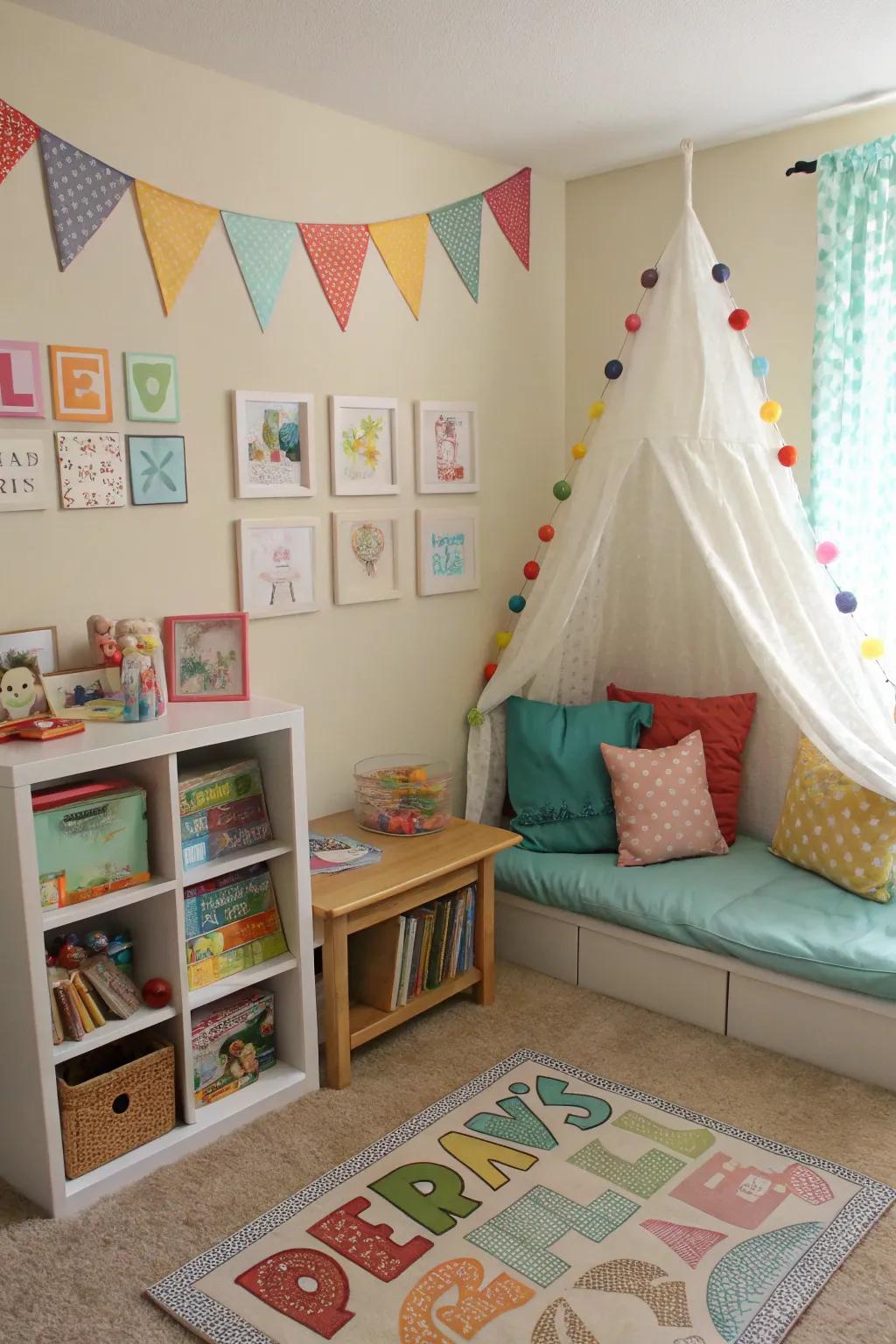
A child’s room is their canvas for creativity and discovery, so why not give them a corner (or two!) that’s tailor-made for imagination? Interactive play zones help kids focus, explore, and feel a sense of ownership over their space. Whether it’s a mini library, an art studio, or a little hideaway for daydreams, these areas can be as flexible as your child’s interests.
One of my favorite projects was helping twins Ella and Mia transform their shared room. With clever zoning, we carved out a cozy reading nook, a crafts table, and a pretend-play tent—all in one small bedroom! The girls flourished, each finding her own way to play and create.
If you’re wondering where to begin, try adding one or more of these interactive play zones:
- Book Nook: Create a special spot with low shelves and comfy seating for reading adventures.
- Craft Corner: Set up a sturdy table and storage for art supplies to fuel creativity.
- Pretend Play Den: Use a teepee, play tent, or even a simple canopy to invent new worlds.
- Puzzle & Game Pad: Dedicate a soft rug area to puzzles, board games, and collaborative fun.
Let’s not forget: the best play zones evolve with your child. Can the craft table become a homework hub next year? Can the tent morph into a cozy fort for sleepovers? Keep flexibility in mind, and let your child have a say. Your space doesn’t have to be big for their dreams to be! A well-placed cushion or cleverly-curated corner can spark hours of laughter and learning—no batteries required.
A few helpful options:
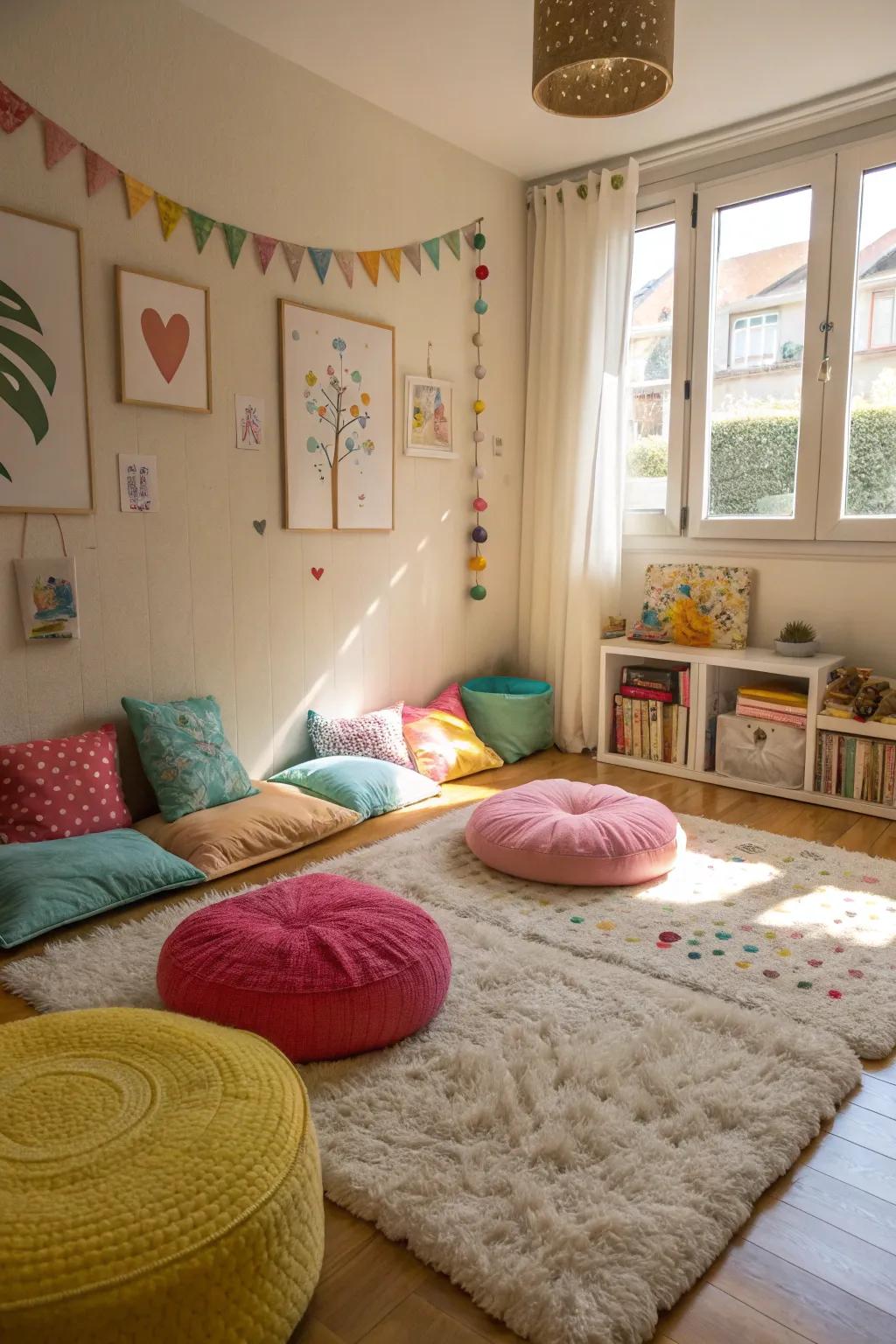
Every child’s room should feel like a cozy nest. Think soft rugs under tiny toes, a mountain of plush cushions, and throws that beg for bedtime stories. Layering textiles is more than decorating—it’s wrapping your little one in comfort from the ground up.
Sometimes, the right blanket really does make all the difference.
Try these:
6. Whimsical Worlds Await: Themed Room Magic
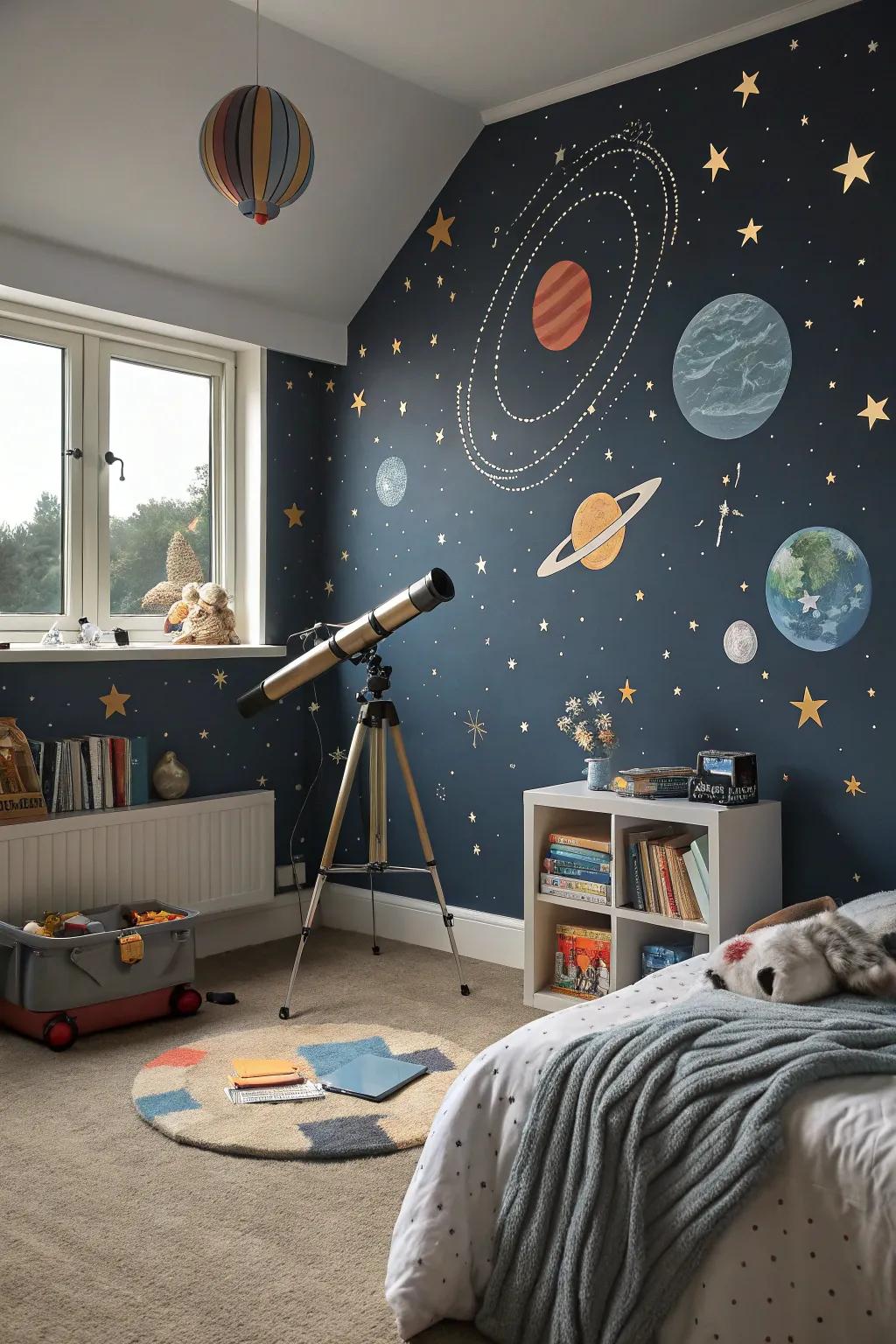
Is there anything more enchanting than stepping into a room that feels like it was spun from the pages of a favorite story? Themed rooms have this incredible ability to turn the everyday into the extraordinary.
I’ve found over the years that when a room is designed around a child’s passion—be it space travel, deep-sea adventure, or woodland magic—it fosters creativity and gives them a space where their imaginations can soar. But themed rooms aren’t just about bold visuals—they thrive on thoughtful layering.
If you’re considering a themed space, here are a few strategies to ensure your child’s wonderland is as practical as it is playful:
- Start with a neutral base for floors and walls, so the theme can evolve as interests change.
- Use removable wall decals or bedding to keep updates simple and budget-friendly.
- Incorporate subtle touches—like glowing stars or a statement lamp—that encourage interactive play.
- Mix in functional pieces, such as storage bins matching the theme, to keep the room organized.
I’ll never forget working with Max, a dinosaur-obsessed six-year-old, and his parents. We built a prehistoric paradise with forest-green walls, fossil-printed bedding, and a volcano lamp that glowed softly at night. The best part? The room grew with Max—when he discovered a love for planets, we simply swapped out the artwork and a few accessories, proving that themed spaces can be as flexible as they are magical.
So, what inspires your child? Let their room tell their story—one layer at a time.
Might be a good match:
7. A Splash, a Dash, a Room Full of Color
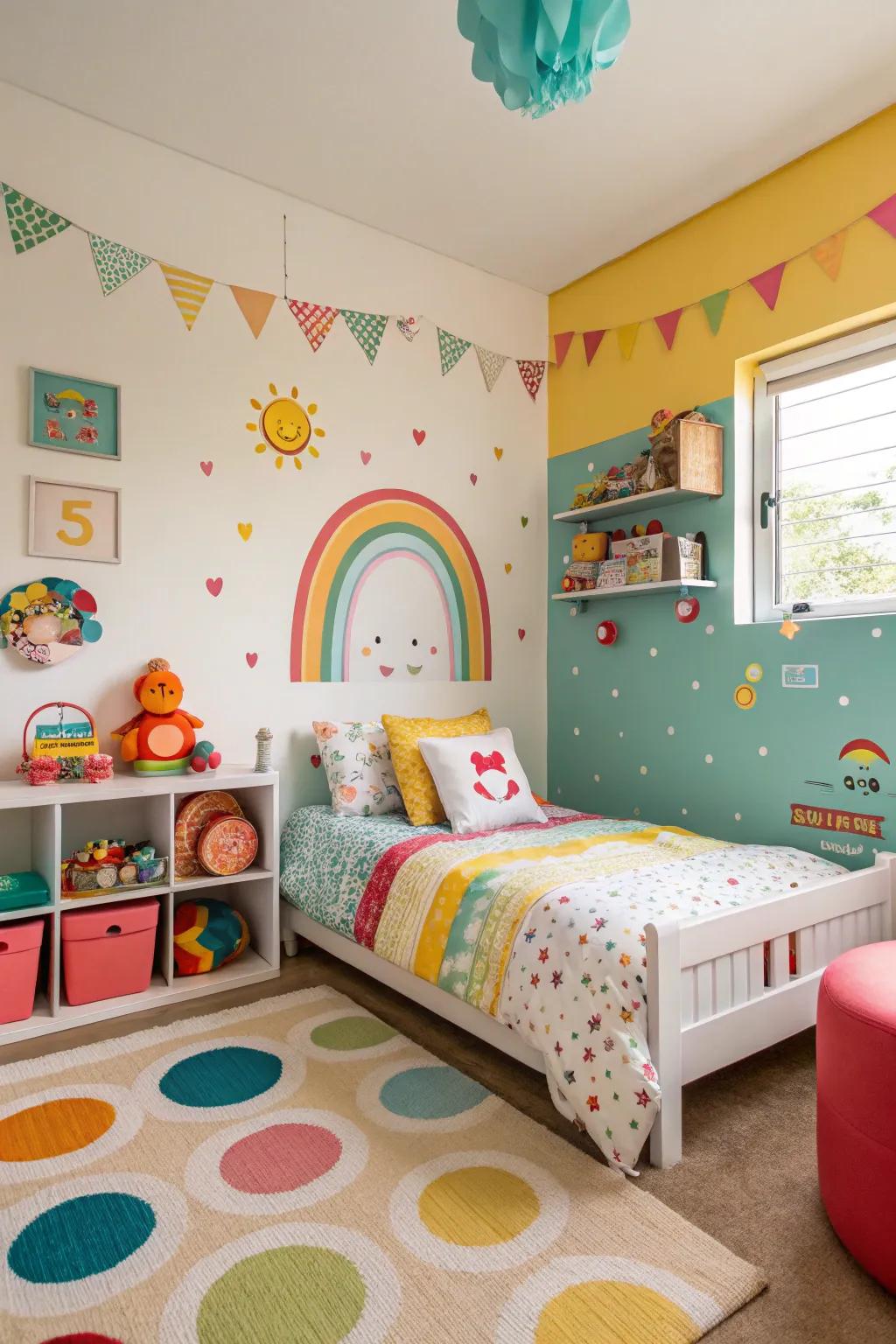
There’s an undeniable energy that color brings into a kid’s room. Sometimes, all it takes is a bold burst—on the walls, the floor, or in the bedding—to shift the whole mood from sleepy to sensational.
Looking for ideas? Here are some of my favorite ways to introduce vibrancy and fun:
- Accent walls in playful hues: Paint one wall a bold shade—think sunny yellow or aqua blue—to set the stage for imagination.
- Mix-and-match textiles: Layer different patterns and colors for bedding and curtains for a look that says “anything goes.”
- Statement rugs: A colorful area rug can define a play zone and soften hardwood or tile for tumbling toes.
When I worked with Zoe, an energetic five-year-old with a love for rainbows, we chose a theme that celebrated every shade. From multicolored wall decals to a riotous patchwork rug, her room became a joyful celebration of color. When she outgrew certain motifs, quick swaps kept the space feeling fresh—no major overhaul needed!
Color isn’t just a design choice—it’s an invitation to play, explore, and make every day a little brighter.
Some ideas to consider:
8. How Bright Should a Kid’s Room Be? Let’s Light Up Your Imagination!
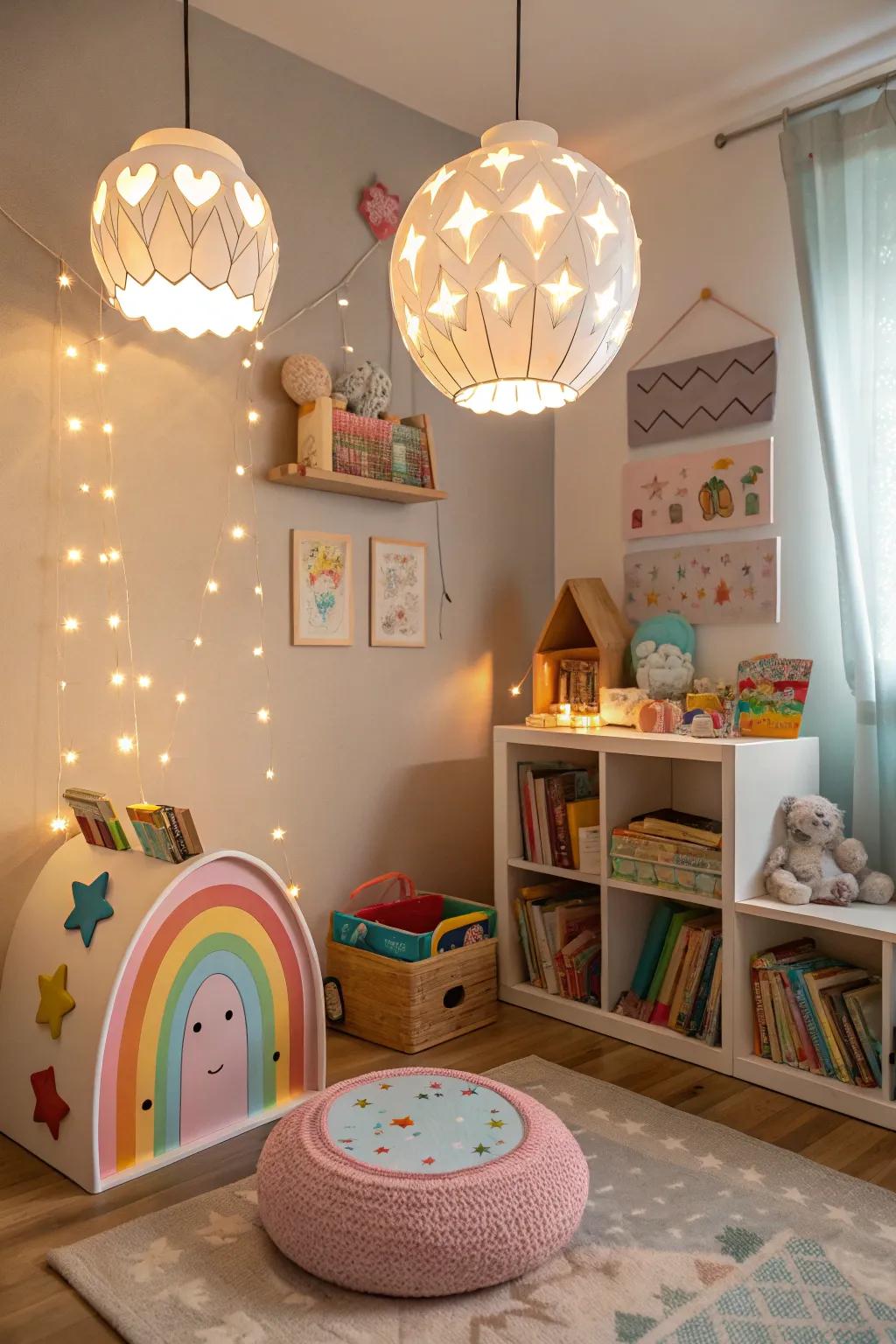
Lighting isn’t just about flipping a switch—it’s where the magic begins. I’ve seen how a playful, creative light fixture can transform even the simplest space into a dreamy hideaway. Those tiny glimmers and glows become part of a child’s memories: nighttime stories, giggles, and wishes whispered in the dark.
Whether you choose a string of rainbow fairy lights or a statement lamp shaped like a heart, creative lighting pulls the whole room together. If you’re not sure where to start, consider these quick ideas for instant atmosphere:
- Hang fairy lights around a canopy or bed frame for a gentle, twinkling glow.
- Pick a themed lamp or nightlight—think animals, stars, or rainbows—that matches your child’s interests.
- Try a projector lamp to bring the outside in, creating starry skies or magical landscapes.
I still remember working with Max and his mom on his first “big kid” room. We picked a star projector together and—oh, the delight on his face when he saw his ceiling come alive! That simple addition made bedtime his favorite adventure. Ask yourself: How can you layer different types of lighting—overhead, soft task lights, sweet little accent pieces—for every mood and activity?
Don’t be afraid to play with shadows and color! Lighting can be the secret ingredient that transforms your child’s everyday into something truly enchanting.
Possibly handy products:
9. Sleepover Spectacular: Cozy, Clever, and Crowd-Pleasing!
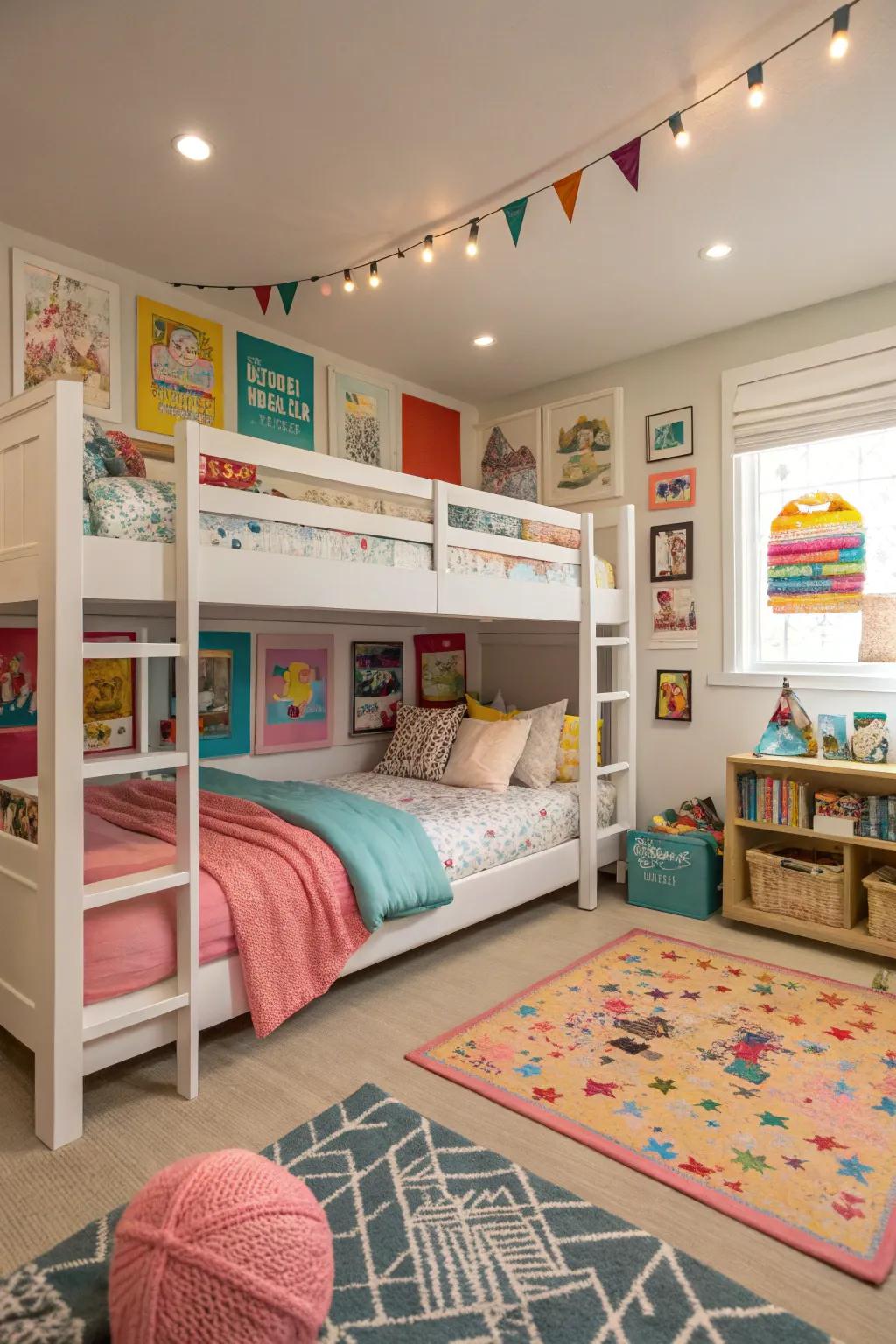
Is there any childhood joy quite like inviting friends over for a sleepover? A kid’s room that makes sleepovers magical also makes every ordinary night feel a little more special. But designing for fun and function can be a challenge—especially when space is at a premium.
Start by thinking big on flexibility. Trundle beds that disappear by day, bunk beds that add adventure, plush rugs for group games, and twinkling string lights can all turn a simple room into a hosting haven.
Working with the Thompsons was one of my favorite projects—they wanted a space where both of their kids could invite friends, read books, and have late-night whispers. We chose a custom bunk bed with built-in storage (for all those sleeping bags and midnight snacks!) and layered cozy throws. The room didn’t just become sleepover-ready—it became the most popular spot on the block!
When Sarah came to me for help with her twins’ shared room, we focused on multi-mode spaces. Soft mats rolled out for story time quickly doubled as extra beds, and a colorful play rug drew everyone together for games before lights out.
- Provide personal reading lights for each bed—kids love a private glow for late-night comics.
- Stash a basket of board games and puzzles for instant group entertainment.
- Choose washable bedding and rugs for effortless cleanup after snack-filled nights.
- Incorporate playful wall decals or a chalkboard for doodles and to-do lists.
It’s more than décor—it’s an invitation to memories.
Not just for sleepovers, but for the everyday magic of childhood.
Check these products out:
10. Nooks and Crannies: Building a Cozy Corner for Bookworms
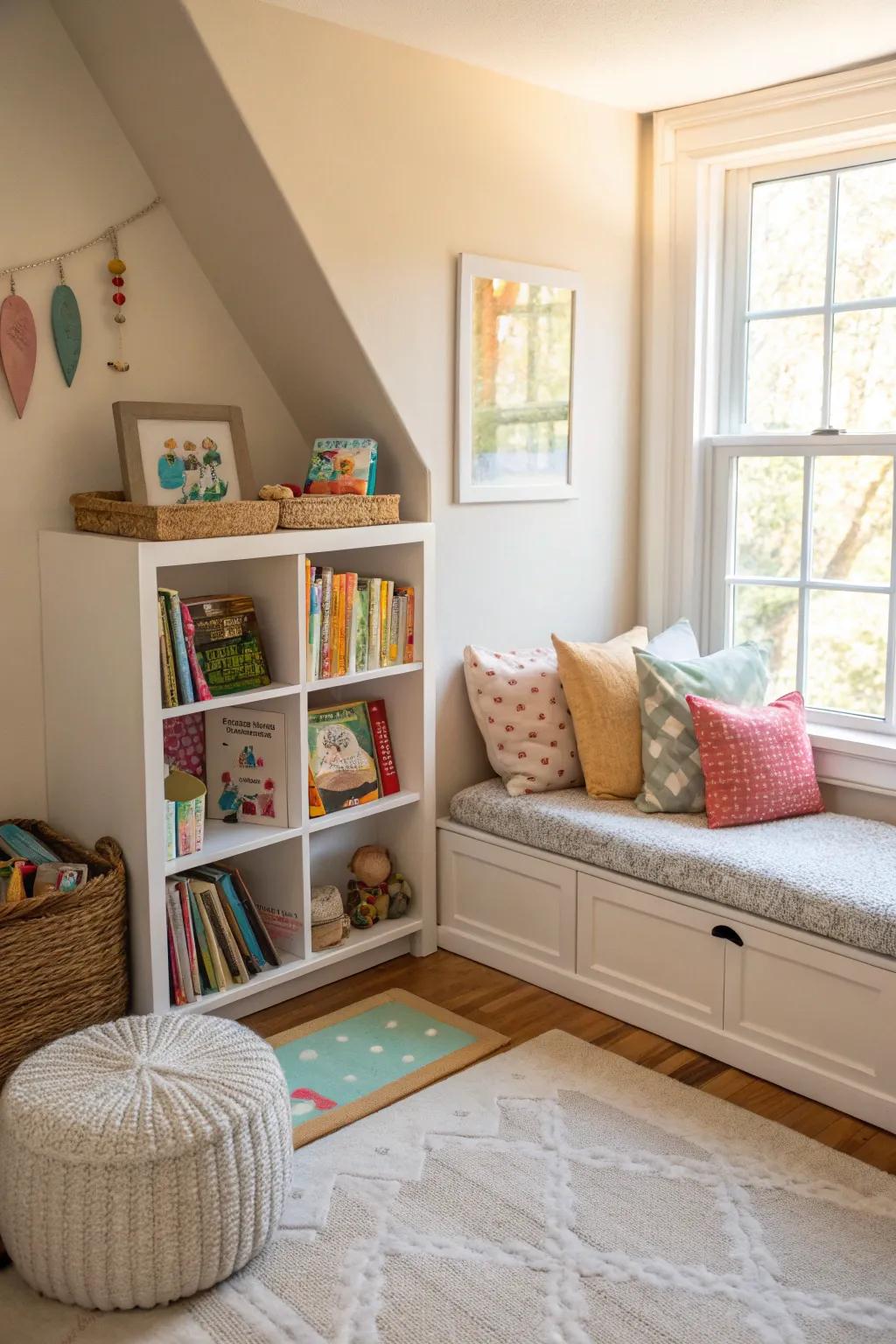
Every child deserves a little haven—a soft, sunlit space where their imagination can unfurl amid the soothing rustle of pages.
When thinking about a book nook, ask yourself: What makes a space truly inviting for young readers? I’ve found it’s less about the square footage and more about the details that spark delight and comfort. Before you start, picture the nook through your child’s eyes—can they reach their favorite stories? Are fluffy textures within arm’s reach?
Here are a few ways to make a book nook not just cozy, but captivating:
- Layer different fabrics for maximum snuggle factor—combine a window seat cushion, chunky knit throws, and soft woven rugs.
- Use low, open shelving so little ones can select (and put away!) their favorite tales independently.
- Add a basket of plush toys or reading buddies for quiet company.
- Incorporate twinkling fairy lights or a gentle reading lamp to build a magical atmosphere.
A book nook isn’t just décor—it’s a memory-maker. I’ll always remember working with the Martins, whose daughter Eliza was a shy, hesitant reader. We transformed an unused alcove into a vibrant nook with whimsical wallpaper, rainbow pillows, and a bookshelf at her height. Soon, Eliza was eagerly turning pages on her own, her confidence blossoming. The secret? Giving her ownership and comfort in her reading retreat. If you’re designing your nook, don’t chase perfection—chase the feeling.
Let the nook evolve with your child’s growing curiosity!
Some handy options:
11. How High Can You Go?
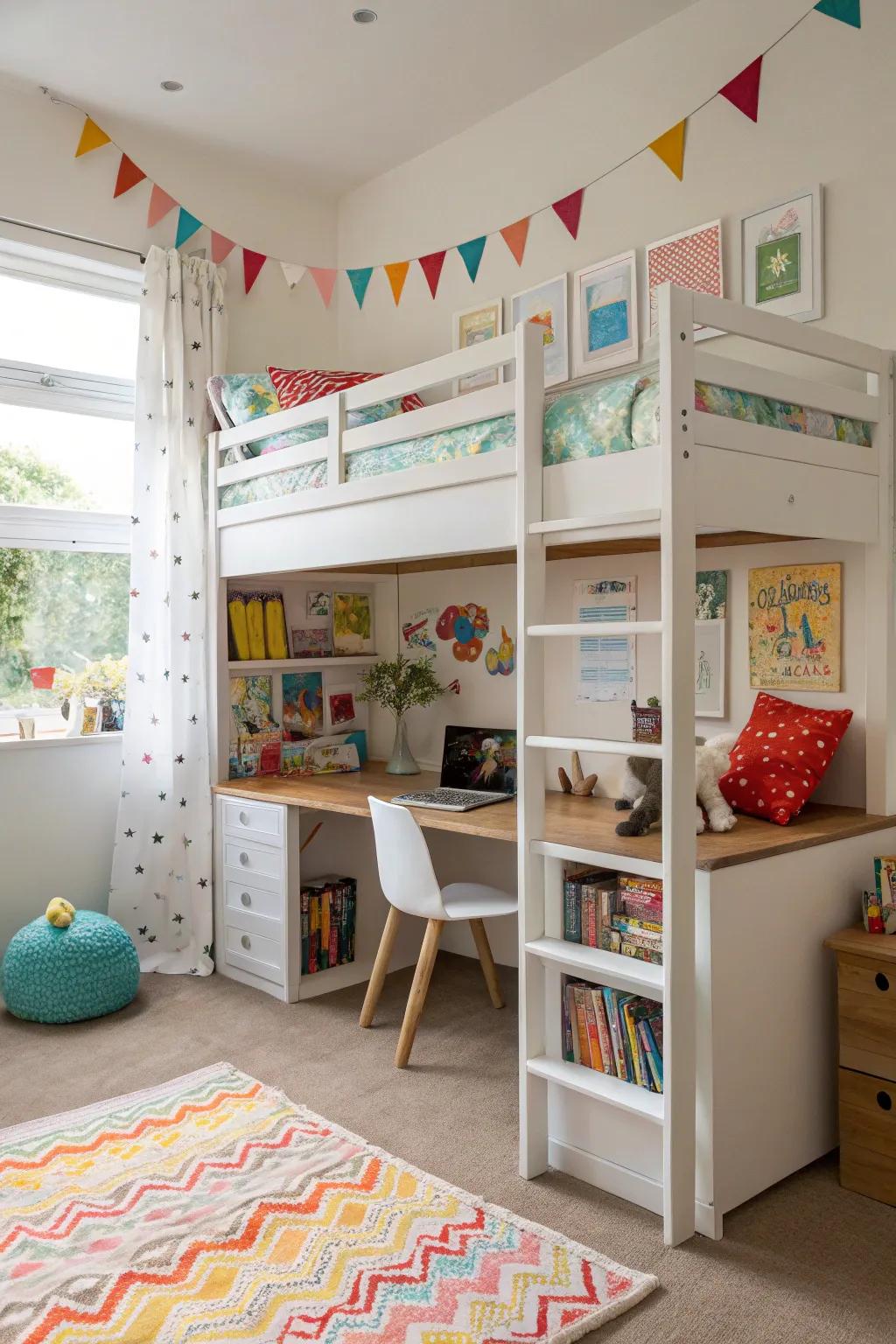
Kids’ rooms can feel cramped fast—which is why I love the simple trick of building upwards with loft beds. They’re a gamechanger for maximizing square footage, especially in smaller homes.
Try tucking a reading nook, study desk, or play corner underneath for instant multi-functionality. The result? A snug sanctuary that grows with your child’s needs—leaving the clutter (and chaos!) off the floor and out of sight.
Give these a look:
12. Add Washable Elements
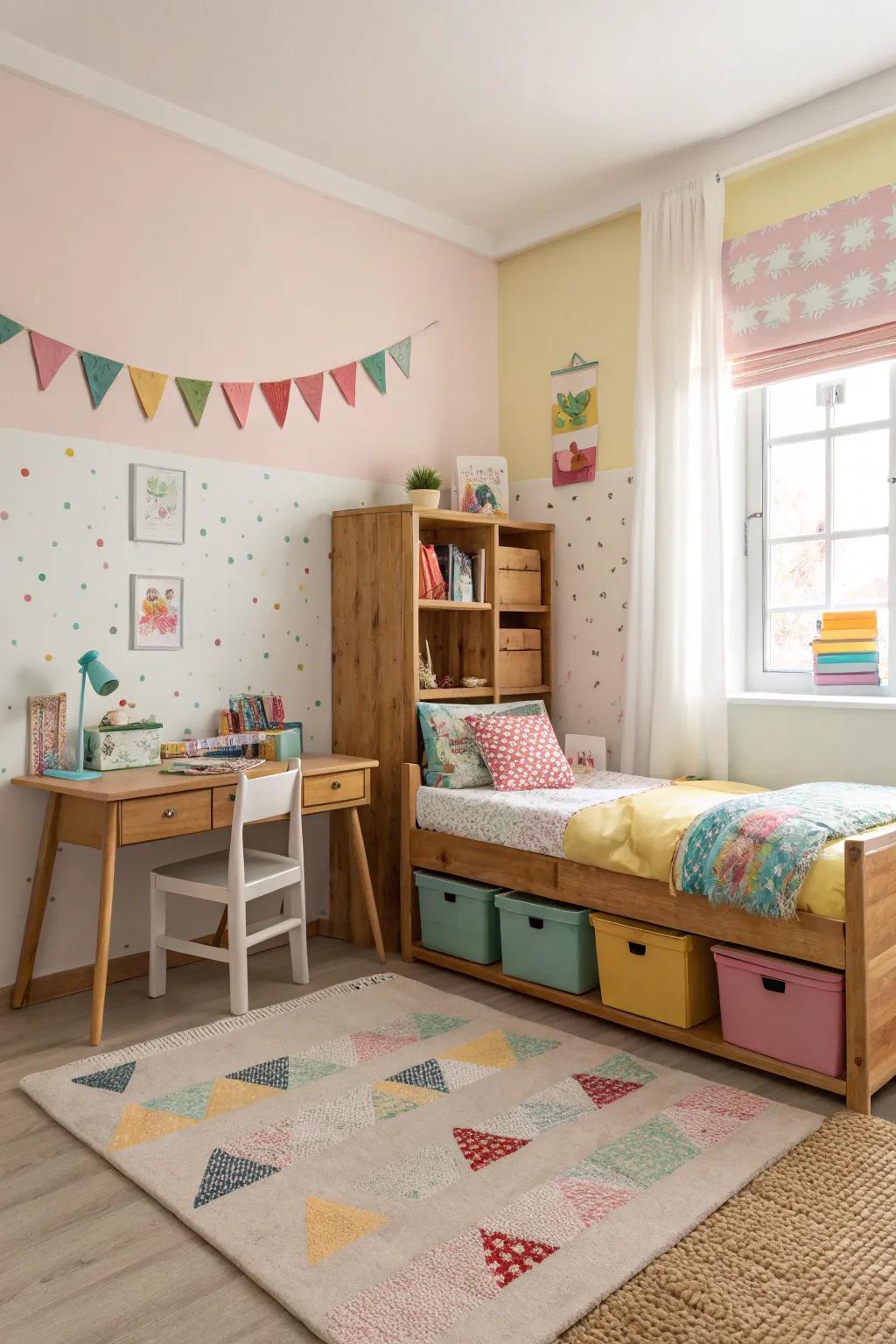
Choose washable materials for walls and furniture to ease maintenance and longevity. I’ve learned that easy-to-clean surfaces are lifesavers in kids’ rooms, keeping them fresh and vibrant.
Items that may come in handy:
13. Gallery Walls and Glitter Glue: Fostering Creative Hearts
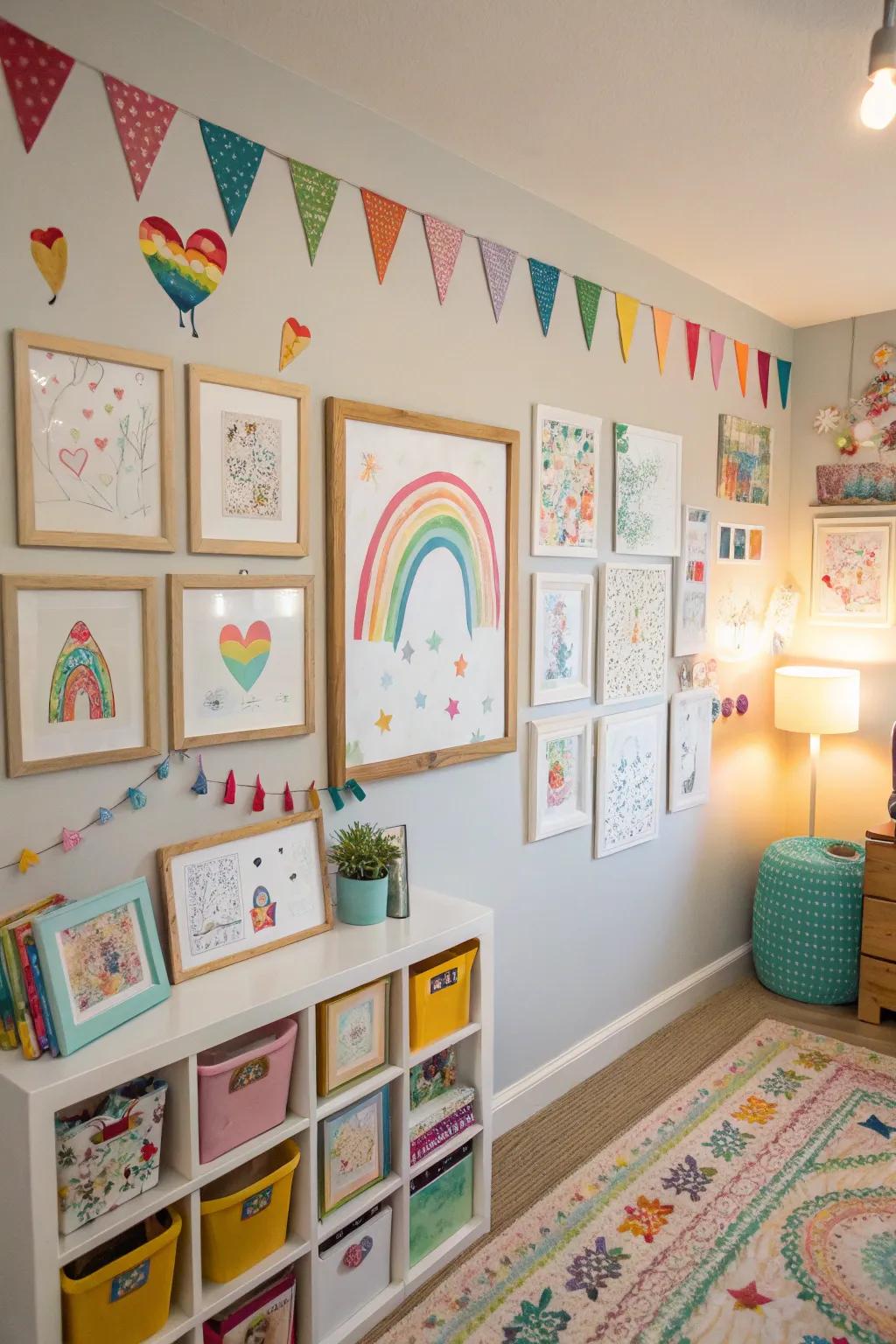
Kids’ imaginations deserve center stage—and what better place to spotlight their creativity than right on their bedroom walls? When children see their artwork proudly displayed, it does more than decorate a space; it nurtures a sense of pride, confidence, and identity. As a designer, I’ve witnessed how turning a room into a personal art gallery can light up little faces and make a space feel uniquely theirs.
Building an at-home gallery isn’t just about thumbtacking paper to drywall. Consider wall mounts, clever frames, or a playful string-and-peg setup for a changing exhibit that evolves alongside your child. Encourage them to curate their display, sparking conversations about their favorite creations and the stories behind them.
- Children’s artwork display can be swapped out regularly, keeping the decor fresh and interactive.
- Use mats and frames in bold hues or simple neutrals depending on your child’s taste.
- Reserve a special section for seasonal crafts—think autumn leaves or winter snowflakes!
I once helped Linda and James’ daughter choose a special spot above her reading nook. We used colorful frames and mini clips so she could trade her masterpieces as she grew. The result? A dynamic wall that felt like her very own museum—and a constant reminder of her creative spark.
Let your child’s everyday art inspire the atmosphere and watch their confidence grow!
These products might be useful:
14. Why Not Mix Old with New?
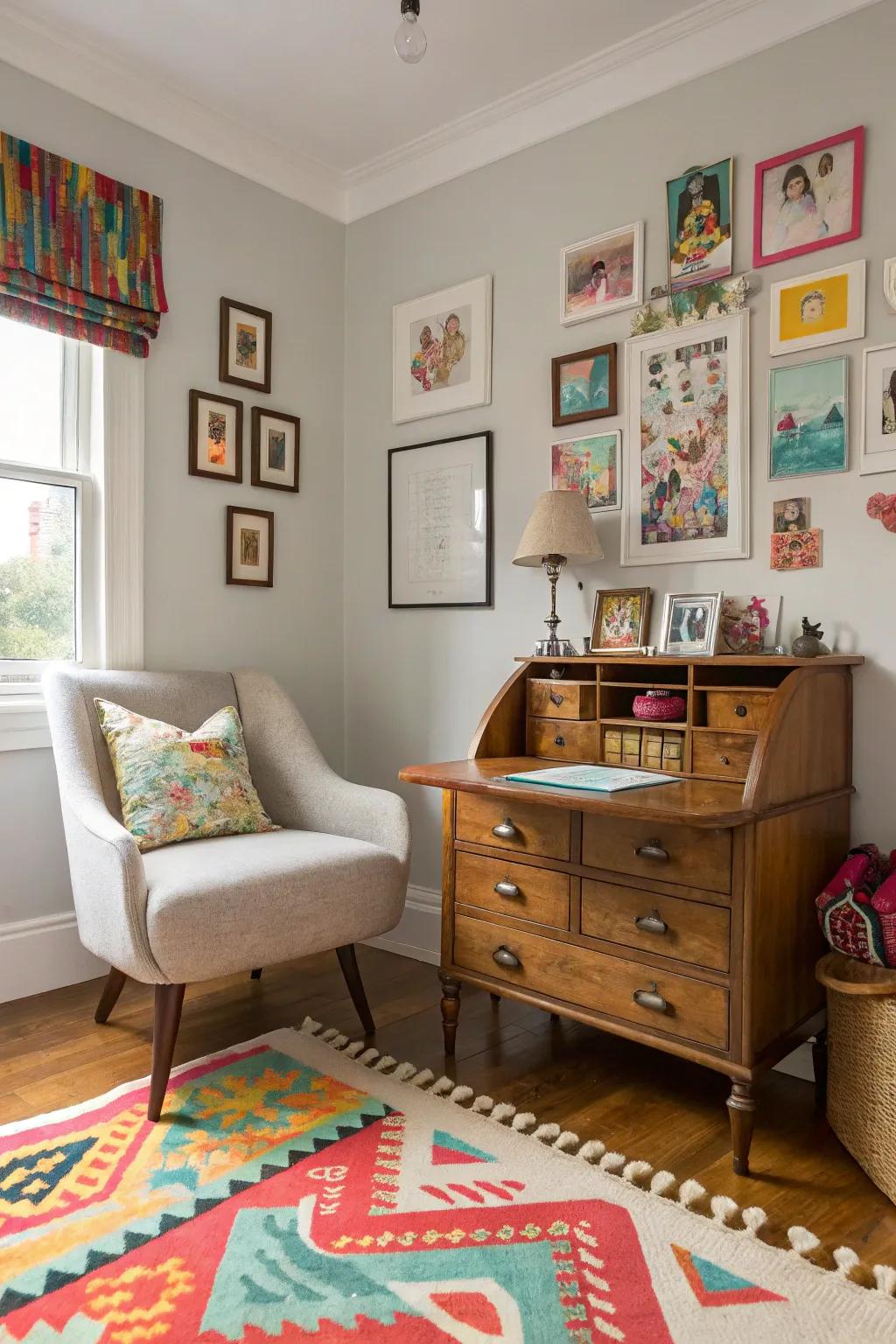
Heirloom furniture tells a story—a gentle thread tying past generations to the present. When you blend these pieces with modern elements, your child’s room becomes layered with meaning, not just style.
Take a moment to ask yourself: What special family treasures could shape this space? Sometimes, a vintage lamp or a timeworn desk does more than fill a corner.
These pieces don’t just add charm—they spark conversations and shape memories.
Explore these options:
15. How Do You Create a Study Space That Kids Actually Love?
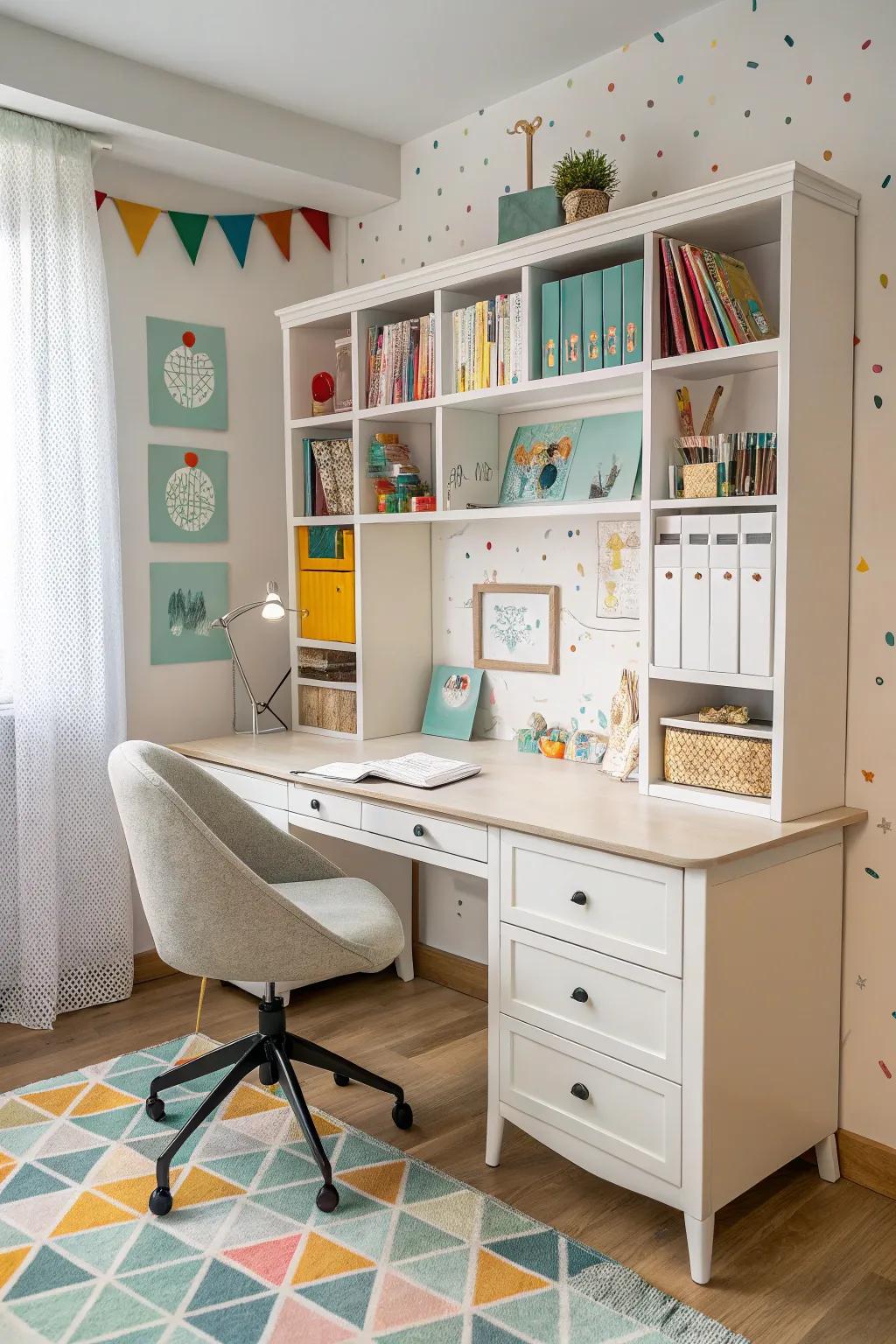
A dedicated study station is more than just a desk and a chair—it’s a launchpad for big dreams (and, let’s be honest, occasional doodling). With thoughtful planning, you can transform even the smallest alcove into a motivating zone where focus feels natural. Start by asking your child about their favorite ways to learn: does a burst of color energize them, or do soft neutrals help them concentrate? Do they need shelves within arm’s reach, or extra surface space for craft projects?
Organization is half the battle.
Tidy trays and storage bins keep pencils and papers in check, but a personalized touch—a corkboard for artwork, or a framed photo for encouragement—makes the space truly theirs.
I once worked with Sarah and her son Lucas, who confessed that homework was always spread across the kitchen table (and often lost under snacks).
We carved out a study zone by the window using modular furniture and a pop of blue paint on the wall behind the desk. The result? Lucas not only finished assignments on time, but started drawing after school just for fun.
The right setup sparks creativity and helps routines stick..
Maybe worth checking out:
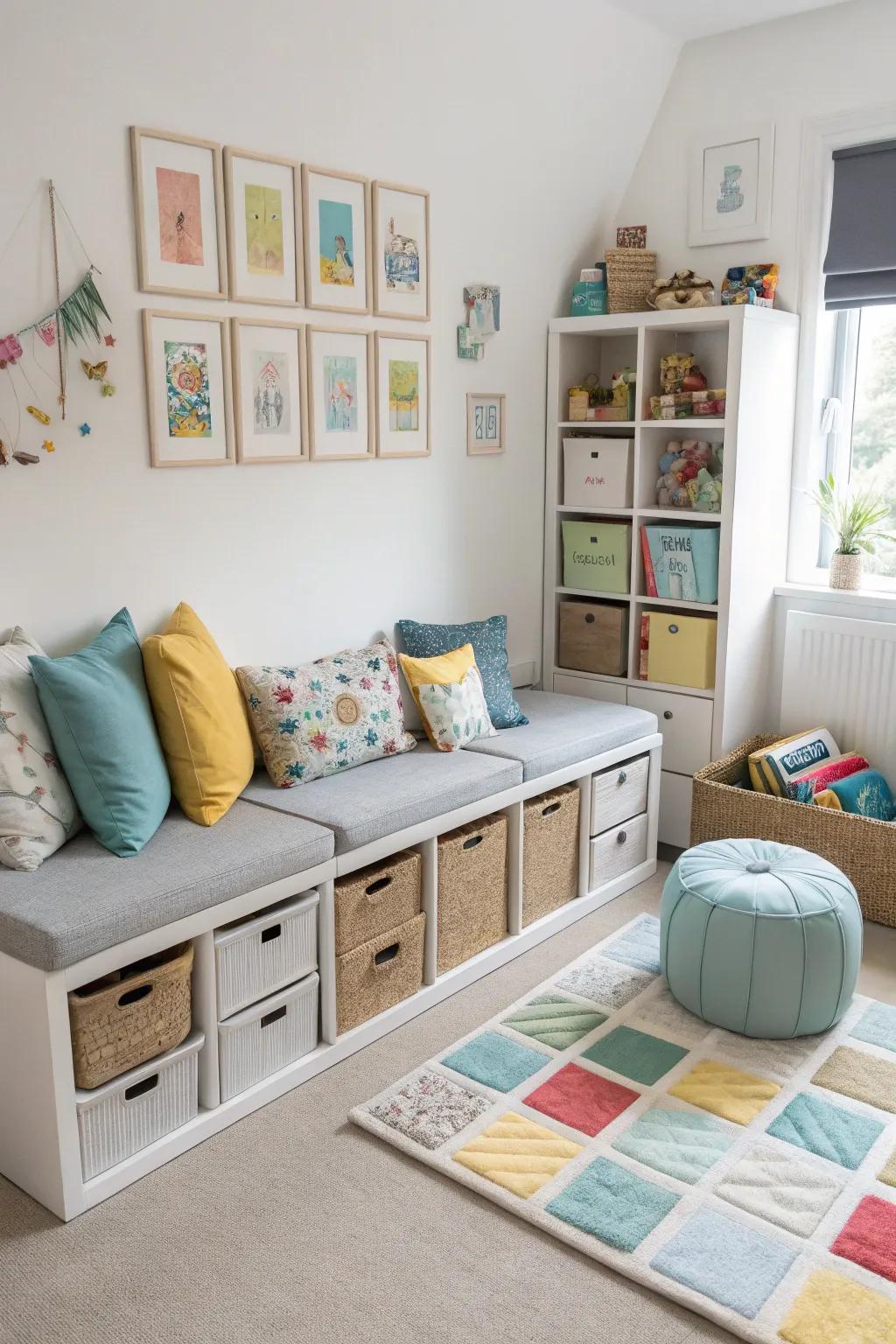
Functional furniture is absolutely my secret sauce for tidy, happy kids’ rooms. I’m talking about pieces that are as clever as they are cute—think benches that stash away clutter or bookshelves that double as display art!
Have you ever wished you could wave away mess like a magician? Well, with multi-purpose furniture, you almost can! Kids’ rooms thrive when everything has a home, so focus on seating with hidden storage or shelves that welcome a rotating cast of treasures. Give those odd socks and runaway LEGOs a soft landing spot, and you’ll love how your child’s space feels calmer and more inviting.

